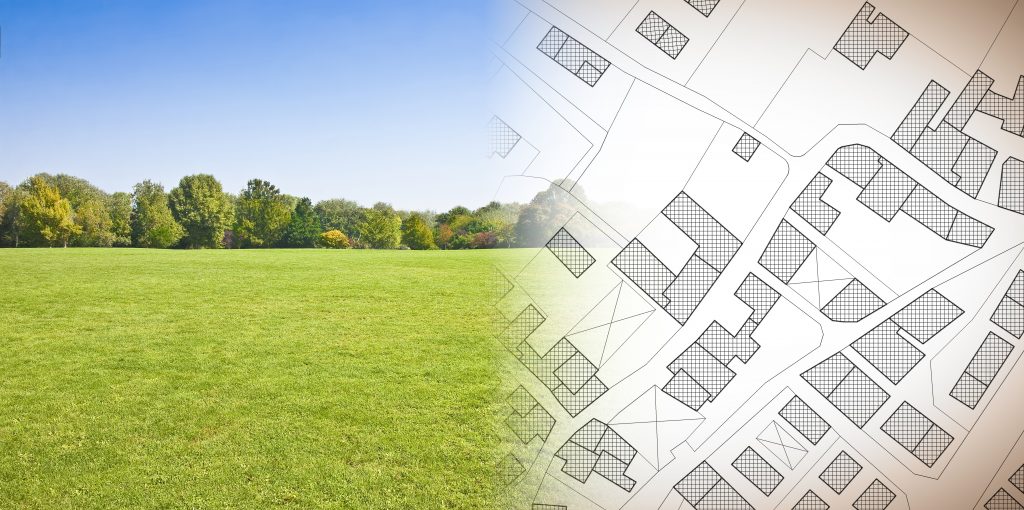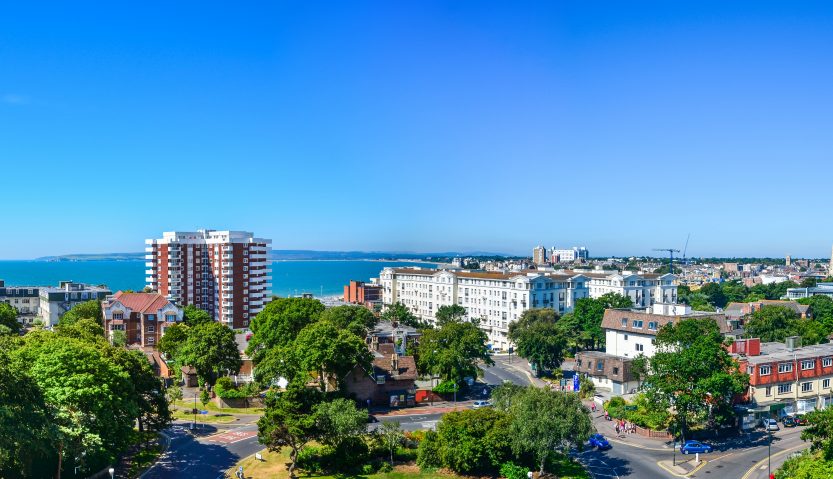Psychogeography, the missing link in ESG?
January 2023 | Dr Jason Frost

Environmental, social and governance (ESG) represents a tripartite prism through which to take decisions, to capture value or to define a new corporate (or other) strategy. At its root it is about tackling the various externalities; structures or conditions, which serve to promote or reinforce an unequal or dominant form of control (however this is manifested).
But externalities are just that, external. If ESG is to be used to genuinely influence and change how we think and act, we need to think about how positive behaviours are internalised. If externalities are about the head, ESG is about the heart. This is a challenge with significant relevance to the practice of place-making. The question which all such practitioners must consider is; Do places change how people perceive the environment around them, or is it the preconceived notions of the people that modify and manipulate how places are formed and shaped around them?
During my time as a local councillor, I have spent a good number of hours, and many angry telephone-calls/letters/public meetings, trying to make the case that urban/suburban development is needed to help address this or that wider problem e.g. the need for affordable housing options or to help initiate the more general regeneration of the area. Now it is of course tempting to dismiss such attitudes as mere parochialism at best or selfish nimbyism at worst. The inevitable battle between the ‘have gots’ vs. the ‘have nots.’ Sometimes this is certainly justified. However, dig past the immediate resistance to change and you can often detect a much deeper reality. There is a distant, and perhaps even unconscious, sense that the changes that are apparent are somehow taking away the ownership of surroundings, that residents are now somehow exposed.
Why is this? An answer could be psychogeography.
The term first emerged in Paris during the 1950s, one of the many varieties of radical ‘anti-establishment’ thinking propounded by a new generation of intellectuals, critics and social commentators. Theorised by the Marxist philosopher and filmmaker (also notorious drunk) Guy Debord (1931-1994), he hoped to wield his new concept of psychogeography as another weapon in the revolutionary campaign to transform urban life, first for purely aesthetic purposes, but all to soon for political ends as well.
Debord defined psychogeography as being ‘The study of the specific effects of the geographic environment, consciously organised or not, on the emotions and behaviour of individuals.’ For Debord, and his circle of avant-garde artists and philosophers, the post-modern industrial city – to a certain extent, the whole practice of ‘urban/town planning’ which had so transformed Paris during the mid-nineteenth century and had been accelerating in the post-war period – represented the system’s seizure of the natural and human environment and the remaking of this space for its own purposes. Which, in their specifically Marxist critique, was of course the advance of capitalist production.
Debord wrote;
Capitalist production has unified space. This unification is at the same time an extensive and intensive process of banalization. The accumulation of commodities produced in mass for the abstract market…destroy the autonomy and quality of places.
In other words, urban/town planning was a mechanism for separating man from space. The living space was dictated purely by its function within larger system. The many new towns designed in order to support the modern industrial economy “…clearly inscribe on the landscape their rupture with the historical time on which they are built; their motto could be: ‘On this spot nothing will ever happen, and nothing ever has.’ Debord saw psychogeography as a means of recovering man’s control over their living space, or ‘the autonomy of place.’
 However, as vivid as this critique of post-modern urban living was, psychogeography was never actually systematised as a methodology or an approach to be deployed as antidote. Instead, like many of his time, Debord believed that the forthcoming ‘revolution’ would provide the ultimate panacea for all of these problems. Now this is an extreme and highly politically loaded analysis. It was also very much of its time. Indeed, it was for this very reason that the whole concept of psychogeography has over time struggled to slough off its associations with the extremist fringe and be taken seriously as an academic/applied discipline.
However, as vivid as this critique of post-modern urban living was, psychogeography was never actually systematised as a methodology or an approach to be deployed as antidote. Instead, like many of his time, Debord believed that the forthcoming ‘revolution’ would provide the ultimate panacea for all of these problems. Now this is an extreme and highly politically loaded analysis. It was also very much of its time. Indeed, it was for this very reason that the whole concept of psychogeography has over time struggled to slough off its associations with the extremist fringe and be taken seriously as an academic/applied discipline.
Thankfully, there are some like academics Karen O’Rourke and Colin Ellard as well as writers like Wilfried Hou Je Bek who have attempted to sanitise the approach and emphasise its usefulness as a critical and methodological tool. Key to this sanitisation process has been a concerted effort to empirically demonstrate the fundamental connection between the environment and human emotions/behaviours. In his Places of the Heart: The Psychogeography of Everyday Life Colin Ellard makes the case that modern day humans are still instinctively drawn to locations within our environment that our ancient ancestors identified as being the best locations for resource acquisition and defence. To this day, the most desirable properties remain those located on hilltops or the sides of cliffs with open views all around, usually close to large expanses of water. When we visit new urban environments, there is often an unconscious desire to seek out the greenest parts of that place e.g. parks, squares or well planted alleyways. This is a reality that is sometimes recognised in statutory planning regulations. In the UK we have the concept of the ‘Green Belt’.’ In Vancouver, a city that sits poised gracefully between the Rocky Mountains to the east and the Pacific Ocean to the west, those wishing to bring forward any major housing development are legally barred for designing a scheme which might block the surrounding views of the mountains or the sea. In Ellard’s words, this regulation is based on the principle of respecting “…the sacredness of the natural connection.”
Geographer Jay Appleton had earlier advanced a similar theory. He made the case that regardless of the ever more sophisticated attempts to organise urban settlement, humans “…still respond to the faint echo of their natural impulses towards places, even though many of the environmental contingencies associated with these impulses are no longer valid.” He used the examples of the public square and the bar. In both settings, despite the majority of the space being located at the centre of space, people are naturally inclined to fill up the available seating around the edges rather than towards the open area in the centre. Appleton asserted that;
Our near universal preference for such locations make sense to us at a proximate level – everyone knows that we feel more comfortable in such locations – but at the functional level, our preference for spots where we can hunt without being hunted is out of kilter with the contingencies of everyday life. In truth, we are no safer than in its centre; one could see more of the action from the middle of the setting, which in a people-centred setting like a public square, should make us want to be there.
Despite the passage of time and human development, how and where we feel most comfortable is still regulated by primitive responses to a set of risks and benefits that, for the most part, are now irrelevant to our daily lives.
Appleton’s 1975 work The Experience of Landscape sparked a significant rise in interest in “…the biological and evolutionary underpinnings of our preferences for certain kinds of scenes in every realm from aesthetics to landscape architecture and interior design.” This led to a deluge of experimentation which sought to add a scientific credence to this assertion. One of the most famous being the observations of Roger Ulrich, a researcher at Texas A&M University, who determined that those confined to hospital beds but were provided with a view of grass and trees actually seemed to recover more quickly and require less chemical interventions to regulate pain than those who could only see bricks and mortar. These are resonances that are deeply ingrained into our nervous systems. As such, they are constantly at work mediating our own perception of places, how we move through them, where we fill most comfortable and those spots which make us uneasy. They influence our emotions, our stress levels and even the function of our immune systems. As Hou Je Bek wrote; “Psychogeography is the fact that you have an opinion about a space the moment you step into it. This has as much to do with the space as with our hardwired instincts to determine if it safe.”
To a significant extent, we can regard the exercise of placemaking as adhering to the theoretical approach of psychogeography. Unlike ‘urban/town planning’ which can be seen as being motivating principally by a functionalist agenda, placemaking puts the emphasis on ‘curating’ the space rather than controlling it. It places the person closer to the centre of the space in which they occupy. One could argue that ESG, at a conceptual level, shares this same principle. It favours an approach which resists the objective and abstract approach in favour of determinations of value which are far more subjective and person-centred.
However, as I set out at the beginning of this comment piece, our current approach to the integration of ESG principles into placemaking limits the scope of impact to the externalities only. In other words, it remains an exercise in moving the deck chairs around. It is true that these deck chairs are now responsibly sourced, made from recycled materials and manufactured by a company committed to paying a fair wage, but this does not change the fact that the result continues to emphasise the specific arrangement of the deck chairs. I would like to argue that such a limitation could be overcome (at least in part) through the widening of this approach into the theoretical/methodological dimensions associated with psychogeography. By incorporating efforts to try to capture how people actually ‘feel’ about this arrangement of the deck chairs, the practitioners will be far better placed to design and curate a space which goes beyond the external. They would be shaping an environment which has been directly influenced by the users’ own emotional/psychological responses to that space which in turn will make that space a far more effective medium through which to encourage the internalisation of certain behaviours of the users as well as their external display.
Psychogeography is the missing link in ESG. Through the integration of the techniques of emotional research/behavioural science into the place-making profession this link can be forged, and the transformational potential of ESG more fully realised.
< Back to News, Views & Insights
More articles
What do the UK political parties have to say about placemaking?
19th June 2024The publication of Reform UK’s manifesto on Monday 17th June saw the last of the main UK-wide political parties release their proposed legislative pitch to the national electorate ahead of the General Election on Thursday 4th July. Now whilst much of the commentariat have understandably tended to hone in on the respective political parties’ plans […]

Making the most of the Three Investment Themes
24th April 2024The £20m endowment-style funding provided to Town Boards through the Long-Term Plan for Towns programme to allocate across three investment themes over the next decade represents a place-based approach to levelling-up which is forward-looking and agile in its approach. Whilst there is no requirement on how towns utilise funding across the three investment themes, the […]

What does art mean to you?
15th April 2024Many people think of art as painting, drawing – the visual arts you go to a gallery to see. But art is much more than that – its any object or experience that communicates an idea, an emotion, or a view of the world, and it can take many forms. ‘Art isn’t just what we […]